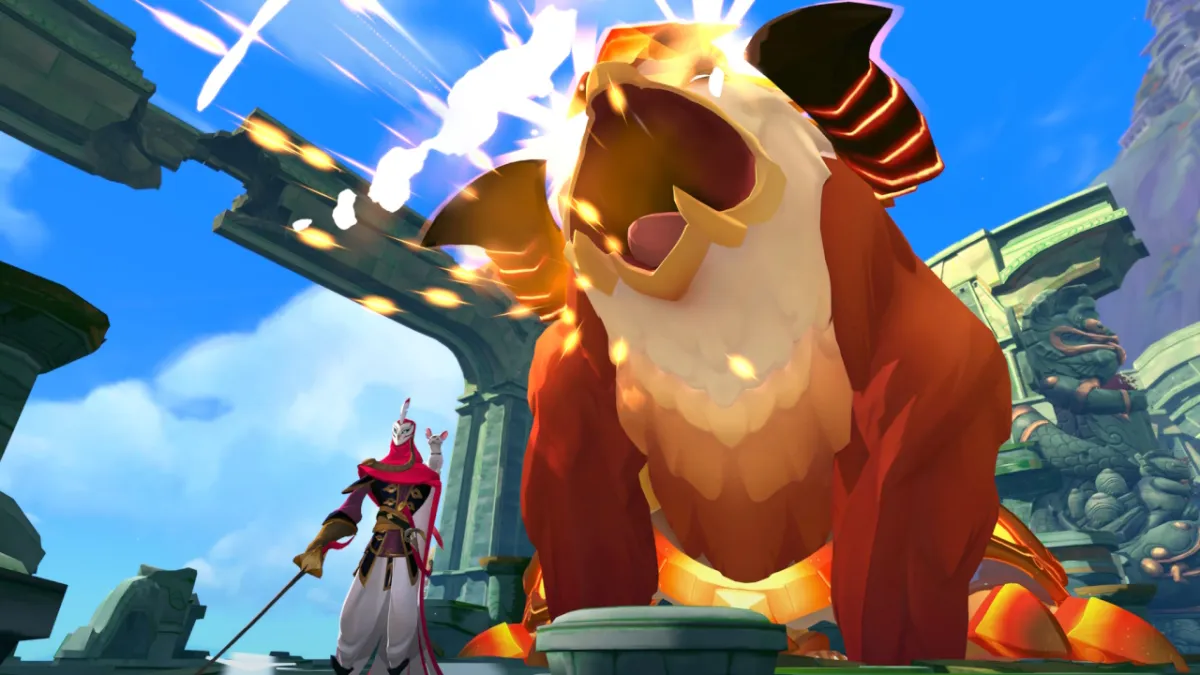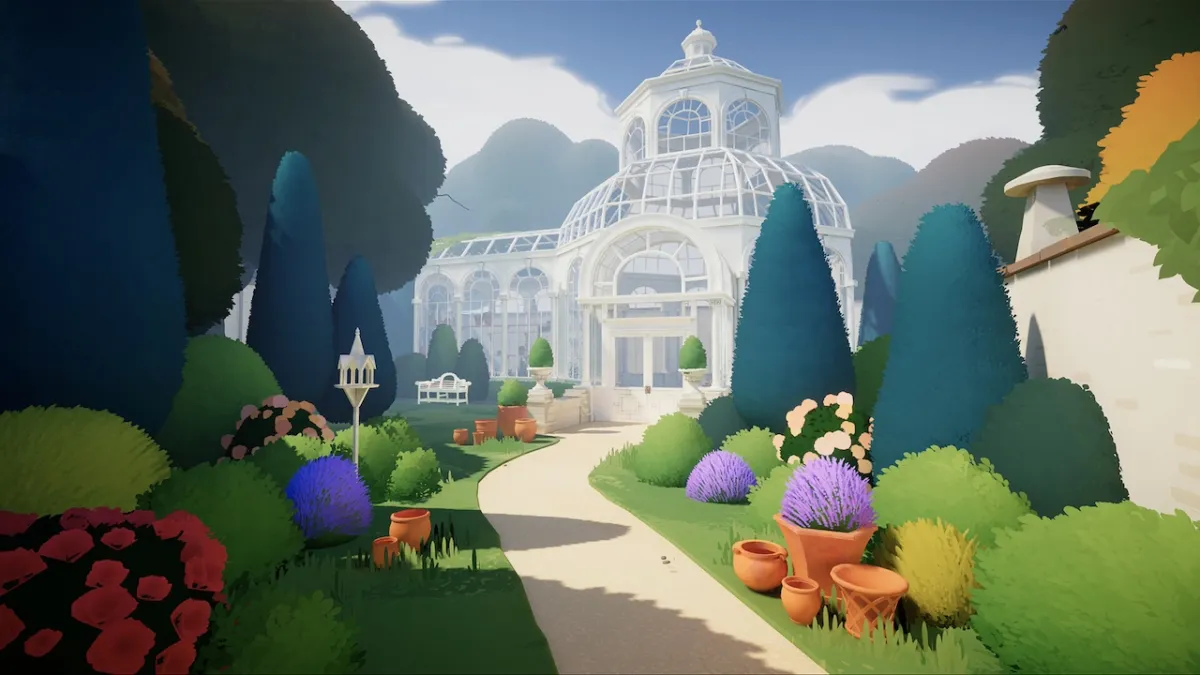Defenders of Ardania has one hell of an idea behind it, and it’s an idea that I’ve been wanting to see become a game for awhile. You take the basic tower defence template – build towers in order to defend your base against waves of aggressors – and add on an aggressive aspect, in that other players or computers also have bases and, while still defending yourself, you’re sending waves of your own to try to wreck them.
Now, I love me some tower defence, and I love tower defence games that add on an extra little twist. Defense Grid – probably the best pure tower defence game ever made – is never off my hard drive. I play Sanctum, which combines traditional tower defence gameplay with first-person shooting, in two-player co-op a few times a week. I’ve recently started playing the wonderful Unstoppable Gorg. But none of these give you the chance to compete as both implacable aggressor and desperate defender at the same time.
Which is why it’s a bit of a shame that, with this wonderful idea behind it, Defenders of Ardania just isn’t very good. In fact there are so many problems with it, ranging from bad design decisions through to lazy implementation, that I’m not actually sure where to begin.
Problem number one, I suppose, is that it doesn’t actually work as a good tower defence game, not least because everything just feels so limited. You can only have a certain number of units out at any given time. You stop accumulating resources if they reach a certain value. Most crucially, though, you can only build a certain number of towers on each map.
This has presumably been done to preserve a sort of balance and stop players from building up impregnable defences, but the problem is that one of the great joys of tower defence games is building up impregnable defences. In most good TD games, you spend most of the game scrambling to barely defeat each wave. You feel clever when you design a maze or a tower layout that forces enemies to double back on themselves, or when you place things just so and it gives towers the chance to hit the encroaching hordes more than once. You retry levels to perfect your defences, employ new layouts, and work out how to let nothing slip. Unsurprisingly, this does not happen when you’re limited to 10 towers on maps that don’t let you build wherever you like.
Another rather large problem is that the UI hasn’t really been thought through. Let’s assume a scenario in which you want to build a tower – a fairly common thing, in these games. You’re not entirely sure of the range, so you find a place that you think might work, bring up the tower select menu, and… oh. The tower selection window and the information box telling you what it does are completely obscuring the green ring that shows the effective range. Marvellous. And when you upgrade a tower – another common thing – there’s no indication as to which particular stats are going to be upgraded.
None of which might be quite so bad if it wasn’t so sodding difficult to work out what the hell was going on. Plenty of units look alike, the colours that differentiate friendly units from hostile ones are indistinct, and if it gets to a point where both players are sending huge waves at each other then good luck working out what’s coming your way from a glance at the chaotic scrum taking place in the middle of the map. The game doesn’t do much to help – there are no audio alerts when towers come under attack, for instance – and, as you might expect, it gets a hell of a lot worse in a four-player game. As do other things, like the framerate, or the minor but inexplicable UI lag which even tends to be present in the single-player campaign.
Then there’s the fact that tutorials plays while the enemy is attacking you, and thus following tutorials will normally get you killed. Or the fact that the AI doesn’t appear to be very good at the game, so once you get the hang of the basic mechanics, most single-player matches should finish – in your favour – within about 5 minutes. Or the fact that, for what is essentially a real-time strategy game with three varied factions and some rather unique mechanics, there isn’t actually an option to play against the AI outside of the main campaign maps. The “Skirmish” mode lets you replay campaign maps, or replay them in a towers-only survival mode, or replay with limited resources. Want to try a free-for-all four-player game with three AIs, with you playing as the Nature faction? Well, you can’t. Tough.
So: you can play a campaign against a computer that’s not very good at the game, or play a pure tower defence mode in a game which isn’t very good at being a pure tower defence game, or replay the campaign with restrictions. No, I can’t really recommend this to anyone on the basis of the single-player options.
You might, however, get some fun out of the multiplayer. Against competent opponents you can actually use your units and towers to their full extent, and there’s certainly a degree of strategy – and, yes, scrambling to defend and react – involved. On the other hand, the failings of the single-player UI still have a discernible impact, as you can see in the video here:
[video2=2811]
I’d hoped, when playing the single-player, that multiplayer might result in a more fraught and chaotic battle, with players jockeying for position on valuable squares that increase tower range or increase resource production, and trying to reroute the more maze-like maps in their favour. This can certainly happen on the larger maps in four-player, but it’s rather less common in two-player.
Games can also devolve into absurdly lengthy wars of attrition. All players have access to a spell that repairs their base, and if a player is bent on mounting a solid defence and pays close attention, it can become incredibly hard to deal any real damage – no matter what combination of units you use.
As an example, my first multiplayer match against fellow IncGamers writer Peter Parrish ended after 85 minutes… because I wandered away from the controller to sort out food, curious to see whether or not he could succeed in killing me in the five minutes I’d be away. While later matches on maps better suited for multiplayer trended more towards the 15-25 minute range, it’s still a potential worry. Thankfully, there is an option to set a time limit, but the fact that games so unenjoyably lengthy are even a possibility implies something about either our skill levels (which is possible) or a balance issue.
If you’re desperate for a competitive tower defence game and have between one and three friends who feel similarly, Defenders of Ardania might give you a few evenings of entertainment, but that’s about the only way I’d ever recommend this. The single-player campaign is just plain bad, and when you compare this to the solo offerings of Defense Grid, Plants vs Zombies, or any of the other good tower defence games out there, it’s hard to think of a reason why you’d want to shell out for this.
Read Article Infection Free Zone review – Zombies in your backyard

Rating:
7.5

Category:
Reviews
Infection Free Zone review – Zombies in your backyard


